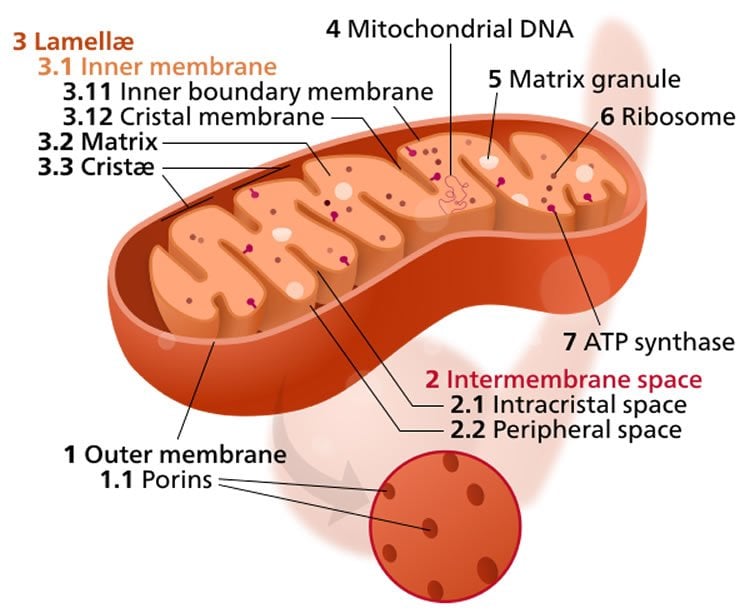Scientists at The Scripps Research Institute (TSRI) have discovered a new role for an enzyme involved in cell death. Their study shows how the enzyme, called RIPK3, relays signals between the cell’s mitochondria “powerhouses” and the immune system.
The new study shows that this crosstalk is important not only for launching immune responses against tumors, but also for regulating the inflammatory responses that may result in autoimmune diseases.
“This finding could be helpful for developing strategies to target cancer and inflammatory diseases,” said TSRI Assistant Professor of Immunology Young Jun Kang, who collaborated on the study with the lab of TSRI Institute Professor Richard A. Lerner, who is also Lita Annenberg Hazen Professor of Immunochemistry.
The study was published September 18, 2015 in the journal Nature Communications.
Talking to the Immune System
Previous studies have shown RIPK3 controls the induction of a type of programmed cell death, called necroptosis, which protects the body from harmful mutations and infections. However, scientists had not fully understood RIPK3’s role in the immune system.
For the new study, the scientists investigated the role of RIPK3 by studying RIPK3-deficient mice. Their research suggests that RIPK3 regulates the activation of natural killer T cells (NKTs), the immune cells that play dual roles in the development of autoimmune diseases and the destruction of cancers. RIPK3 doesn’t directly cause necroptosis; instead, it regulates the activity of a mitochondrial enzyme (PGAM5) to trigger the expression of inflammatory cytokines in NKTs.

To the scientists’ knowledge, this is the first study showing the pathway between the mitochondria and the NKTs. By understanding the pathway, scientists may be able to develop ways to better control NKTs to attack tumors.
The new study also suggests there may be a way to intervene in the pathway to block inflammation. When the researchers deleted the gene for RIPK3 or inhibited other parts of the pathway, they found they could actually protect mice from the induction of acute liver damage, implying a role for RIPK3 in autoimmune diseases.
Kang said future studies will focus on understanding the details of this new signaling pathway, possibly paving the way for new therapies that can either hone the pathway’s cancer-killing role or reduce its role in inflammation.
In addition to Kang and Lerner, authors of the study, “Regulation of NKT cell-mediated immune responses to tumours and liver inflammation by mitochondrial PGAM5-Drp1 signaling,” were Bo-Ram Bang, Kyung Ho Han, Lixin Hong, Eun-Jin Shim and Jianhui Ma of TSRI; and Motoyuki Otsuka of the University of Tokyo.
Funding: This work was supported by the National Institutes of Health (grant AI088229).
Source: Scripps Research Institute
Image Credit: The image is credited to Kelvinsong and is in the public domain
Original Research: Full open access research for “Regulation of NKT cell-mediated immune responses to tumours and liver inflammation by mitochondrial PGAM5-Drp1 signalling” by JYoung Jun Kang, Bo-Ram Bang, Kyung Ho Han, Lixin Hong, Eun-Jin Shim, Jianhui Ma, Richard A. Lerner and Motoyuki Otsuka in Nature Communications. Published online September 18 2015 doi:10.1038/ncomms9371
Abstract
Regulation of NKT cell-mediated immune responses to tumours and liver inflammation by mitochondrial PGAM5-Drp1 signalling
The receptor-interacting protein kinase 3 (RIPK3) plays crucial roles in programmed necrosis and innate inflammatory responses. However, a little is known about the involvement of RIPK3 in NKT cell-mediated immune responses. Here, we demonstrate that RIPK3 plays an essential role in NKT cell function via activation of the mitochondrial phosphatase phosphoglycerate mutase 5 (PGAM5). RIPK3-mediated activation of PGAM5 promotes the expression of cytokines by facilitating nuclear translocation of NFAT and dephosphorylation of dynamin-related protein 1 (Drp1), a GTPase is essential for mitochondrial homoeostasis. Ripk3−/− mice show reduced NKT cell responses to metastatic tumour cells, and both deletion of RIPK3 and pharmacological inhibition of Drp1 protects mice from NKT cell-mediated induction of acute liver damage. Collectively, the results identify a crucial role for RIPK3-PGAM5-Drp1/NFAT signalling in NKT cell activation, and further suggest that RIPK3-PGAM5 signalling may mediate crosstalk between mitochondrial function and immune signalling.
“Regulation of NKT cell-mediated immune responses to tumours and liver inflammation by mitochondrial PGAM5-Drp1 signalling” by JYoung Jun Kang, Bo-Ram Bang, Kyung Ho Han, Lixin Hong, Eun-Jin Shim, Jianhui Ma, Richard A. Lerner and Motoyuki Otsuka in Nature Communications. Published online September 18 2015 doi:10.1038/ncomms9371






